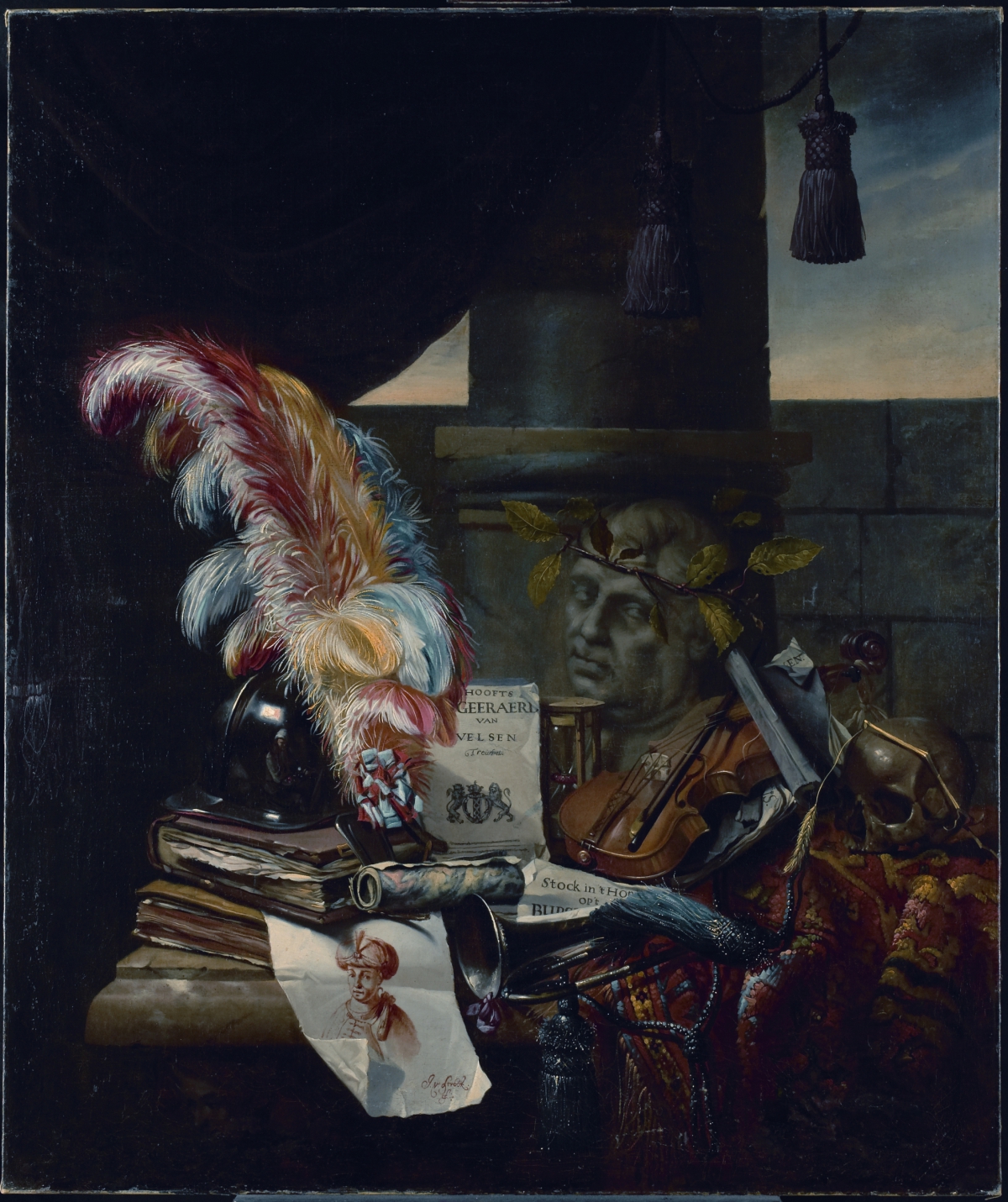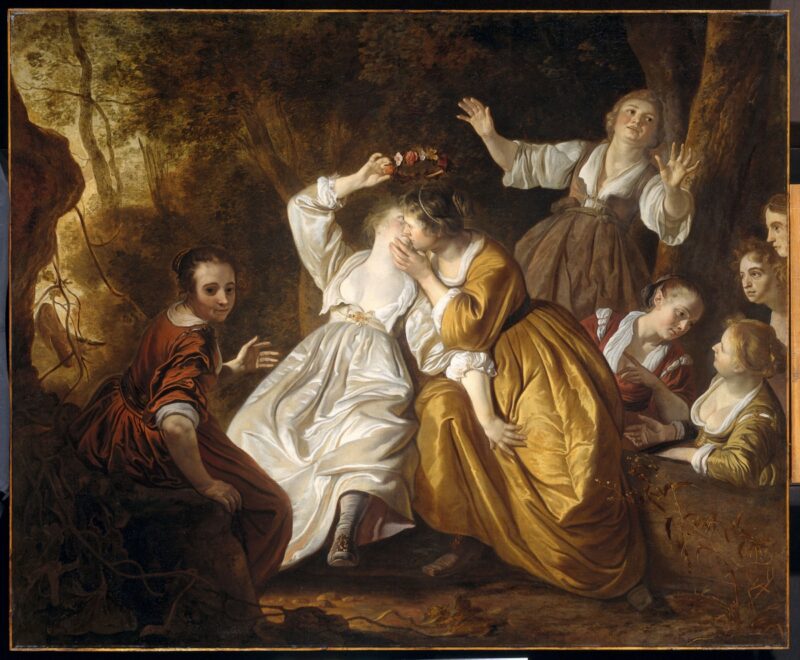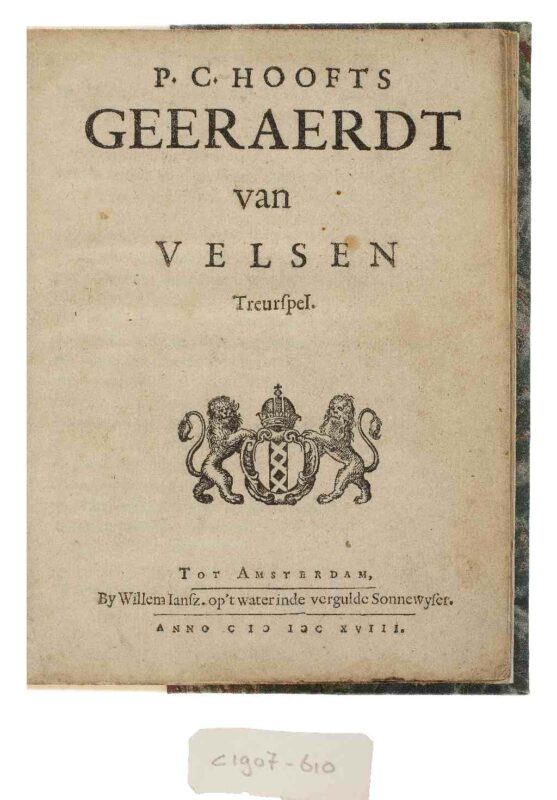Vanitas
Jurriaen van Streek, Vanitas Still Life With Helmet and Books, 1647-1687 (active),
oil on canvas, 142 x 119 cm Collection of Rijksmuseum Muiderslot, Muiden, M1959-009.
All is Vanity
The painter Jurriaen van Streek (1632-1687) from Amsterdam specialized in still-life paintings. This huge painting, a meter and a half high, is about transience. which is also called vanitas. Vanitas paintings are easily recognized by set elements, such as a skull, ears of wheat, and an hourglass. These are all symbols for the passing of time, the transience of life. And could there be anything more transient than fame? That is the question Van Streek asks us here with the aid of the most famous 17th-century writer: P.C. Hooft. At the center is the title page of a tragedy written by Hooft titled Geeraerdt van Velsen, which was a huge success in theaters in Amsterdam. In front of it is a chalk drawing of an actor in Persian costume, doubtless one of the characters in the first Dutch opera Granida also written by Hooft. In the background is a marble bust with a laurel wreath, Symbolizing a lauded poet. Could the gleaming trumpet in the front be the trumpet of praise? This is where the homage to Hooft ends. For like time, fame slips through the fingers like sand. In the end, one loses one’s art and death comes for you. It impresses on the viewer the transience of fame and is a warning to avoid vanity. Even so, the painter too is vainglorious to the point of putting himself in the painting. Can you see him sitting at his easel?
 EN
EN NL
NL DE
DE![Muiderslot [EN]](https://muiderslot.nl/en/wp-content/uploads/sites/2/2021/07/muiderslot-rood.png)
![Muiderslot [EN]](https://muiderslot.nl/en/wp-content/uploads/sites/2/2021/07/Logo_Vierkant_Muiderslot_Rood.png)




